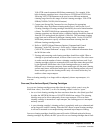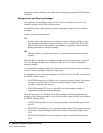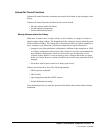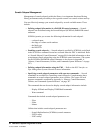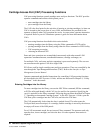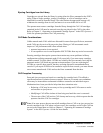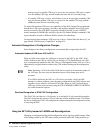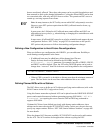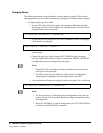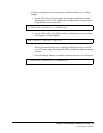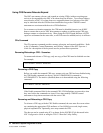
Chapter 2. Host Software Component Functions 47
1st ed., 6/30/04 - 312579601
Ejecting Cartridges from the Library
Cartridges are ejected from the library by using either the EJect command or the EJECt
utility. Either a single cartridge, a range of cartridges, or a list of cartridges can be
identified for removal from the library. The robot locates the appropriate storage cell,
withdraws the cartridge from its cell, and moves it to an available cell in a CAP.
The operator must remove cartridges from the library through the CAP. All cartridges
contained in the CAP must be removed once they are placed in the CAP by the robot.
Refer to Chapter 3, ‘‘Operating an Automated Cartridge System’’ in the HSC Operator’s
Guide for operator procedures for CAP processing.
CAP Mode Considerations
Unlike manual mode CAPs which are allocated for enters from specific hosts, automatic
mode CAPs may be serviced by any active host. Placing a CAP in automatic mode
improves CAP performance and is best utilized when:
• operator intervention is not required
• it is acceptable to receive and respond to HSC WTORs from any active host console.
Entering cartridges that require operator intervention may create problems in library
configurations utilizing automatic mode CAPs, especially if you enter many cartridges
without external Tri-Optic labels. WTORs are issued by the host currently servicing the
automatic mode CAP which may present an inconvenience if you are expecting the
WTORs at a specific host console, but they are being directed to an unattended host
console. If you require WTORs to be returned to a specific host console, you must allocate
one or more manual mode CAPs and use the Enter command from that host.
CAP Exception Processing
Enter and eject processes are based on a cartridge-by-cartridge basis. This affords a
significant amount of isolation between requests. However, in certain cases redundant
errors may be incurred due to abnormal conditions external to an individual request.
Mechanisms have been provided to help when these situations arise:
• Releasing a CAP may be necessary to free up cartridge and CAP resources and to
end an enter or eject process.
• Modifying a CAP offline isolates it from being used until the error is corrected.
• The next use of the CAP invokes CAP cleanup and recovery, which requests that the
operator check the CAP for cartridges.
Note: If an enter process has not moved all cartridges from a CAP or an eject process has
moved cartridges to the CAP when a release occurs, the cartridges are left in the CAP but
are not in the control data set. Refer to Chapter 3, ‘‘Operating an Automated Cartridge
System’’ in the HSC Operator’s Guide for more details.



